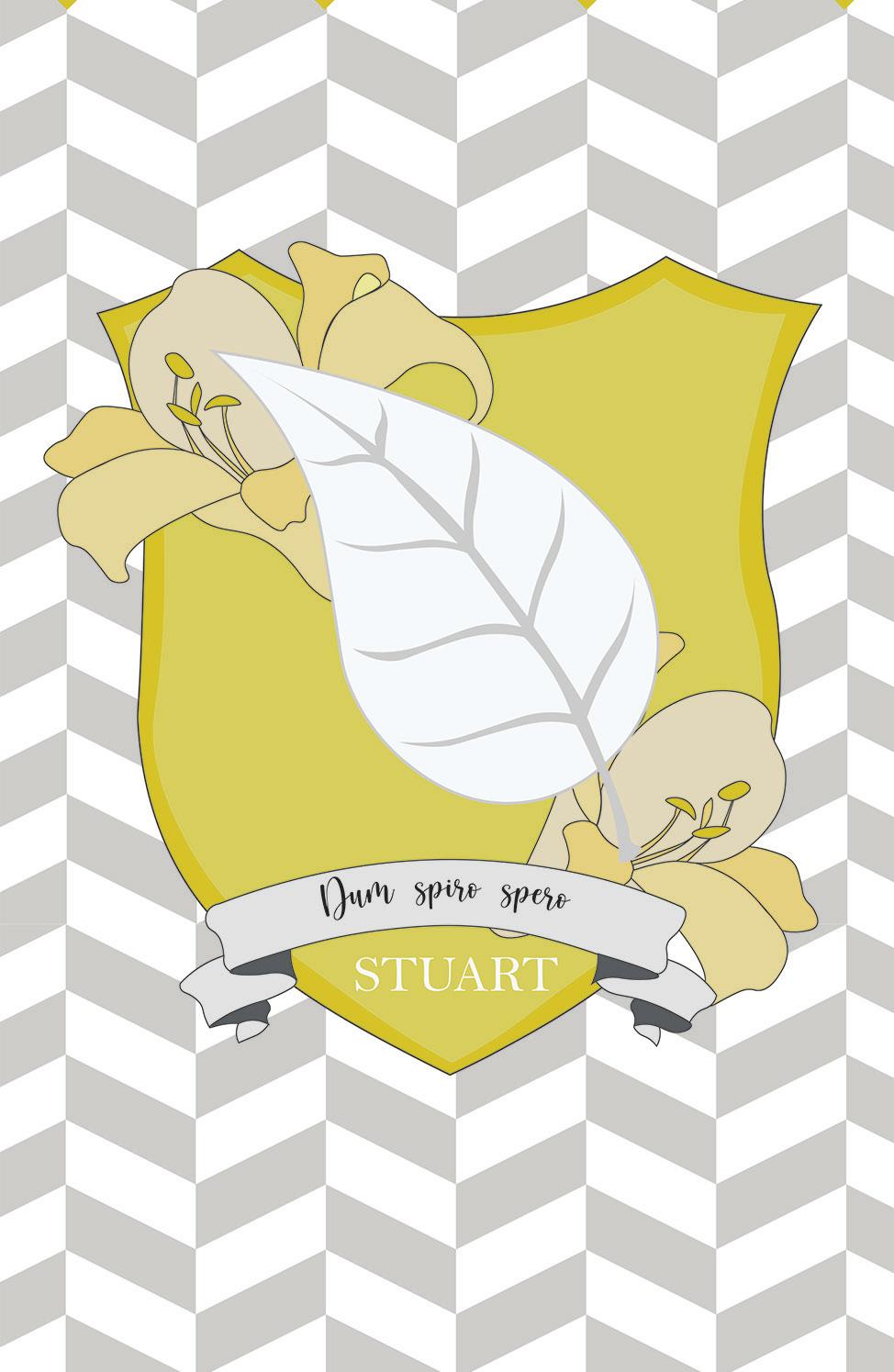TOWER TALK
Villa Duchesne and Oak Hill School





Villa Duchesne and Oak Hill School




Dear Villa Community,

Hello all! After being away for so long it is amazing to see everyone’s faces – well, half of your faces - back at Villa! Many things have changed these past few months due to COVID-19, so there’s a lot to cover. In this issue of Tower Talk, you can read fun stories about food and fashion, as well as more serious stories about COVID shaming and the ups and downs of Virtual Learning. Flip on over to page 13 to read Liza Brown’s take on fall fashion and how you can stay on-trend, even during a pandemic. Interested to learn how local businesses have managed to keep their doors open throughout COVID? Turn to page 11 to find Hope Schenk’s visit to the Saint Louis bakery, La Pâtisserie Chouquette. I highly recommend stopping by Kate Fesler’s overview of maskne (yes, you read that right, maskne.) Don’t know what that is? Neither did I until I read page 15. Speaking of facemasks, on page 14 Anna Wiss reviews them to discover which ones are more efficient, cheaper, and more comfortable. So, whether you are looking for the best pancake place in town or want to read about current national events, our Tower Talk staff has you covered. Enjoy this October issue; we know you’ll love it!
Sincerely, Molly Kaspura
Pg 03 Humans of Villa
and Features Pg 10-12 Food in the Lou
Pg 04 Spotlight on Kate Decker
Pg 05 COVID’s College Impact
Pg 06-07 Know Before You Vote
Anna Johnson and Abrianna Sykes explore each presidential candidate’s stances on important issues as well as how COVID has altered voting
Flip to these pages to find a STL pancake and coffee review and learn how a local business powers through the current pandemic
and Fitness Pg 14 Mask Comparison Pg 13 Fall Fashion
Pg 09 Virtual Learning Challenges Pg 15 Maskne
Pg 08 COVID Shaming
Hope Schenk talks about what COVID shaming is and how to prevent it.
Kate Fesler discusses what “maskne” is and how to prevent it from taking over your life

Editor-in-Chief:
Molly Kaspura
Art Directors:
Elle Decker
Kate Fesler
Senior Editors: Anna Johnson
Anna Wiss
Staff Writers:
Liza Brown, Bella Fehl, Camryn Petti, Hope Schenk, Abrianna Sykes Advisers:
Pamela Harris-Marcus
Danielle Thurm
Printing Company: Missourian Publishing Co.
Anew school year means a new schedule, new insights, and, of course, new students. In this year’s first “Humans of Villa”, Anna Johnson (‘22) and Bella Fehl (‘22) interview four of the six new eighth graders:

A fan of the TV series: “Grey’s Anatomy” is Olivia Massie (‘25). Massie plays volleyball and also loves to bake. One of her best memories is the time she went ziplining in Mexico, on a trip with her family and friends. She shared, “You would hike up the ziplines, go down to one, and then hike to the next one.” The ziplines were planted above canyons, so it was scary. One thing Olivia did not like about her trip was the banana boating experience. However, the crazy driving of the boat caused her to fall off multiple times, which was enjoyable. Luckily, the delicious Mexican food made up for it! The trip was very memorable for Massie, in fact, she still keeps an anklet with a dolphin on it that reminds her of her lively experiences.
In addition to excelling in musical theater while dancing and playing lacrosse, Penny Brunner (‘25) is a certified scuba diver. She began her certification as a scuba diver when she was 12 years old in Key West, FL, and she loves it because: “ [she] can see lots of cool creatures underwater.” Additionally, Penny also loves the musical, “Hamilton” by Lin-Manuel Miranda. Some of her favorite characters within the play are the king and George Washington because they are “amazing singers,” as she states. Similar to her fellow classmates, she despises spiders and has a fear for them.


Aside from playing both basketball and lacrosse, Keely Eigelberger (‘25) enjoys baking and cooking in her down time. When she finds time to unwind, Keely enjoys watching the reality Netflix series, “Selling Sunset”, a TV show that revolves around real estate agents selling high-end homes in Los Angeles while navigating their personal and professional lives. A memory that Keely recalls as one of her happiest is when she went hiking with her brother in Colorado, which she puts as a “good bonding experience” for the two. She states: “we could see all the mountain ranges, which was pretty cool, and we also saw deer tracks and other animal tracks.” In addition to hiking, Keely also wants to go skiing soon. In fact, it is an activity on her bucket list.
Following in her father’s footsteps, Izzy Miller (‘25), loves ice hockey. As she claims: “it allows for new friendships, and... I get the opportunity to travel to many places all over the country when I am the one playing.” Although she is a Toronto Maple Leafs fan, since the STL Blues are her home team, she was happy for the team to win the Stanley Cup. One of Miller’s favorite memories is the time she drove around the Caribbean with her family for an entire month. She states that one of her favorite memories was visiting a private beach on a small island: “when we got in the water, there were lots of coral and even wild turtles. Definitely one of the coolest things I’ve experienced.” Similar to her peers, she adores the TV series, “Grey’s Anatomy,” a medical drama about a group of surgeons working at Seattle Grace Hospital.
Story by Bella Fehl and Anna Johnson
Page Design by Bella Fehl
Photos provided by Olivia Massie, Gigi Gaertner, Keely Eigelberger and Izzy Miller



While some of us slept through quarantine, Kate Decker ‘22 started an art business in which she combines her entrepreneurial spirit with her passion for creating art. Being unable to focus during online learning last spring, Kate took to doodling to help her focus in class, eventually filling entire pages with doodles.
After repeating this process multiple times, she had the idea to take it one step further. For nearly a week, she worked on a design that would reflect her personality and her interests, filling in every space with bright designs and vivid images. What was the result? A beautiful, fun, chaotic, colorful, and expressive piece of art that reflected Kate. This single piece of art launched her business. She decided to post it to her Instagram story. Just minutes after the post, people started swiping up and asking if she could make them one. Not only was she flattered and surprised by people’s reactions, she realized this was an opportunity to share her passion with others and help her pass the time during quarantine.

Kate’s Instagram page serves as a platform to share her commissioned art with anybody that comes across it. Customers who come to her page place their orders through direct messages. But here’s a fun fact: she has never personally marketed her business. The only marketing done has been through word of mouth. Whenever she finishes a commission, she posts it and tags the customer. Almost every time, the customer reposts it to their story. Now with every repost, Kate receives five new orders on average. So far she has created more than 33 pieces and has 25 commissions. On top of that, her account has accumulated nearly two hundred followers.
Even though the consumer only sees the finished product, every piece takes time and requires a lot of collaboration and creative thinking. Each piece takes five to six hours depending on what features the customer wants. The more information the customer gives, the quicker the process for Kate because it is easier to fill the page. When a customer only gives a few suggestions, the drawing takes longer because Kate has to find designs that flow cohesively with the rest of the piece. Even though she is the artist, the customer is a huge part of her design process: “I start by asking them to send me personal things about them. It can be anything, each one is completely customizable. After that I put all of their inspos and suggestions in a private pinterest board. I am a very visual learner so by having it all in one place, I am able to find their vibe and add anything I think would flow cohesively with it.”

When looking at all of her commissions, each piece is completely authentic. Through direct messages on Instagram, Kate and her customers are in constant dialogue about what they like, their favorite things, and design elements that reflect their personality. When asked if Kate had a favorite piece she replied, “I like all of them because they’re all so unique to every person. Each and every one tells a different story and I have been so happy to make art that reflects that. Their happiness makes me really happy and what makes me want to keep doing art. Seeing them in people’s dorms and rooms or as gifts makes me feel proud of what I’m doing.”

Through art we are able to share connections with each other. For Kate, those connections are her drive. If it were not for people swiping up and asking for her art, she would not be where she is now. Though her bright and imaginative style sets her apart, it is Kate’s undeniable passion and diligence that she puts into each piece that reflects her artistry and what has helped her develop a good business. But, good business is not based on profit. A good business requires hard work, patience, and passion. For Kate Decker, each of these qualities are noticeable in every piece she is commissioned to design and are the reasons her business will continue to grow.
If you want to look at Kate’s art, check out her instagram: @_kdecker_



Covid-19 has undoubtedly changed almost every aspect of our lives from shopping, interacting with others, going to school, and so much more. However, one aspect that has been on the minds of students and advisors in the college counseling field is how Covid-19 has changed the college admissions process, specifically the emphasis on standardized tests.
Prior to Covid-19, many large universities, such as Ohio State, Mizzou, and University of Southern California required applicants to submit standardized test scores. However, the pandemic put an indefinite halt to some of these standardized tests. If it is unsafe to sit for the test, how can a college or university require students to submit test scores? Now colleges must reevaluate what they ask of students. According to the college counselors at Villa, the changes might not be such a bad thing: “I’m hopeful that many of them will realize that not having test scores for a large percentage of their applicants actually works just fine in their purpose” said Mrs. Alison Malbrough.
Because so many students were unable to obtain spots in order to take their tests, or many of the tests were cancelled, multiple colleges were sympathetic to the fact that requiring test scores was not viable for this year’s applicants. Going test optional means that many large colleges and universities who once heavily
relied on test scores to admit their applicants will no longer be requiring SAT or ACT test scores in applications.
However, many do not realize this was not an easy decision to make. “First of all, I want you and others to know that that decision to go test optional was not just made by the admissions office, This is not something they were able to do quickly and easily, the admissions office really had to fight for and make it important,” said Malbrough.
Since many colleges went test optional, many wonder if standardized tests are still a valid component of the college admissions process. Mr. Daniel Tejada, the head of college counseling, said that Covid-19 has shown “how fragile the college admissions process is… when you look at something like testing, now a lot of students are not having the opportunity to do that, you take that one piece out, everything begins to follow.”
Consequently, colleges are in a tough place when it comes to how they would like to admit their students in the coming years. Mrs. Jenni Alessi believes that “what’s so wonderful this year is that a lot of colleges are putting themselves in the students’ shoes, and they are understanding the difficulties.”
For years, people have argued that requiring test scores was an unfair disadvantage to the applicants because one test cannot possibly encompass who that student is. Moreover, the college counselors at
Villa believe that going test optional benefits the students: “I do think that for many colleges, public and private, once they can demonstrate to their leadership that they can pull in a strong and vibrant freshman class without the use of test scores, my hope is that they will actually embrace that policy and continue it for the long haul,” said Malbrough
Ultimately, going test optional means that the personal essay is more vital than ever. “I think that the student essay and recommendation letters will be much more pivotal in these COVID years. Because the standardized test score requirement has been removed at a lot of schools in this country, they [colleges] will rely on the recommendation letters and the college essay,” says Alessi.
Now that the test score piece has been taken out, colleges will be looking at what we as people want to demonstrate in our essay.
Covid-19 is one of the most life changing experiences that many of us have faced, and it has flipped our lives upside down. Many of us have begun to realize and accept that Covid-19 is not something that will disappear in a couple months; it holds rippling effects that we will be feeling for years to come, and the college admissions process and the college experience is just one of these big changes.

As the November election approaches, it is important to be informed about each candidate’s stance on the issues before heading to the polls. A survey of the senior class and faculty found that these issues are the most important to our community. You can refer back to the candidates’ official campaign websites for further information.
On July 7, 2020: “The Trump administration announced a $1.6 billion agreement with Novavax Inc. to demonstrate commercial-scale manufacturing of the company’s COVID-19 investigational vaccine.”

On April 12th, 2020, Joe Biden stated that we must continue social distancing, provide easily available and prompt testing, and make sure hospitals are prepared for “flare-ups of the disease.”
On July 16, 2020, the Trump administration announced plans “to invest $906 million in the Infrastructure for Rebuilding America discretionary grant program to improve communities and safety, and support economic growth.”
Joe Biden plans to “create millions of good-paying jobs and to give America’s working families the tools, choices, and freedom they need to build back better.”
On August 3rd, 2020: “President Trump signed an executive order expanding access to telehealth services in order to ensure rural Americans access to healthcare.”
On April 30th, 2019, Biden announced plans to “protect the Affordable Care Act from these continued attacks.”
Now you are armed with a bit of information to help you decide who to vote for in the upcoming election! For more information on issues not listed in this article, refer to the candidates’ official campaign websites where you can access information on other topics that are not referenced here. If you are voting in the upcoming election in November, read Abrianna Sykes’ (‘21) story about how voting is being held and managed this year.
Story and Page Design by Anna Johnson
What will voting look like this year: The process will be slightly different
With the pandemic still in full swing and a general election approaching, some changes have been made to the voting system. This is particularly important because those who are eligible to vote should be cognizant of said changes to make the best decision for themselves.
Three of the biggest changes in voting pertain to the Supreme Court ruling on the electoral college; mailin voting; and the creation of new polling locations. Even if you’re not eligible to vote, it is important to learn about these issues because they could be permanent changes to voting. Also, it is important to always stay knowledgeable about information that will affect the future of the country.
In July, the Supreme Court ruled that members of the electoral college have to vote according to their state’s popular vote.
For example, Missouri gets ten electoral votes. If Missourians vote to elect Candidate A, the electorates must vote for Candidate A. In the past, electorates have not always voted in accordance with their state’s popular vote.
In both article 2 and the 12th amendment of the Constitution “gives states broad power over electors, and give electors themselves no rights.” This means that electors were always supposed to vote in agreement with their state’s popular vote. To ensure this rule is followed, there are new consequences, which include a $1,000 fine and removal from the position of elector.
The second major change in voting is due to mail-in ballots. Mail-in ballots are a relatively new idea and are different from absentee ballots.
In St. Louis County, there has been an increase of 30% for absentee ballots this year. St. Louis County is prepared to send out 100,000 absentee ballots for those who do not feel comfortable voting in person.

The last major change is the decision of professional sports teams to turn their stadiums and arenas
into polling locations across the country. Due to the pandemic, officials hope to create safe ways for citizens to continue to vote. The size of these facilities allow for physical distancing even though they are not traditional polling locations. Also,
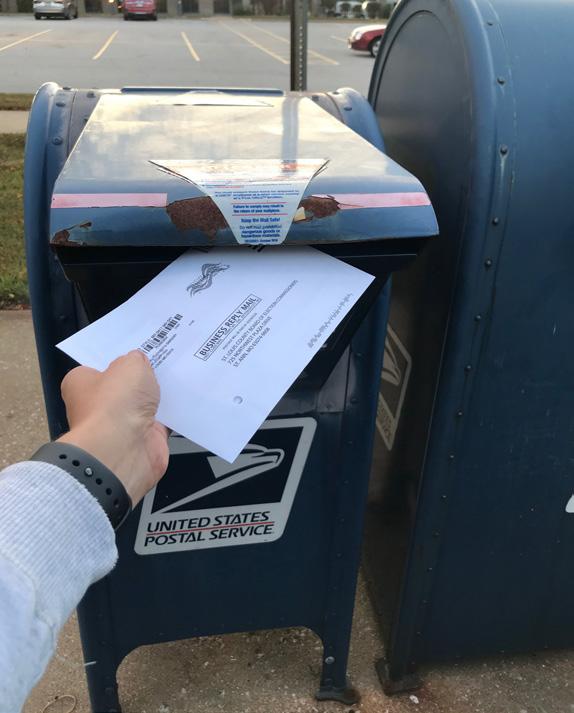
most sports arenas and stadiums are in or near the inner city, and adding these polling sites will allow for a cut-down on long lines and excessive wait times for people to cast their ballots. While there has been nothing said about whether St.. Louis will be also making these changes, they are happening in cities such as Houston, Atlanta, Detroit and Los Angeles to name a few.
While voting might look different this year it is as important as ever. If you are of legal age, make sure your voice is heard.
As the U.S. enters its eighth month of the COVID-19 pandemic, quarantine fatigue has set in for many, and while many areas have lifted restrictions, people long for a return to normalcy.
When COVID was still relatively new in the US, many precautions were taken to help “flatten the curve.” The public did its part and stayed home to lessen the strain on hospitals and keep one another safe. However, as attitudes have shifted, a new trend has emerged: COVID-shaming.

Now, it seems those who contract COVID are quickly deemed irresponsible and careless. However, COVID shaming didn’t start with the increase in cases or the relaxing of restrictions. It seems to have been around since the virus first became an international concern. Xenophobia has risen amongst young adults who were quick to call COVID-19 the “Chinese Virus”.
Now, the stigma of COVID has spread to include anyone displaying symptoms. People are afraid to go to work or school if they have a cough for something as simple as seasonal allergies. Allergies illicit a defensive response: “I’m not sick.” COVID shaming can prevent people and families from getting tested because they don’t want to be “The One.” Nobody wants the world’s fingers pointed at them.
On March 8, the St. Louis region reported its first positive case, which was also the first known positive case in Missouri. Coincidentally, it was also the day my family became a household name. When the world discovered my sister was the “first” case in Missouri, allegations and threats against my family poured in. The assumption was that people who caught COVID were irresponsible and deserved to be ostracized. People blamed and shamed us for something we couldn’t control. Multiple news outlets covered our story, which even went international. People on social media were plastering photos of my family on their stories without permission and would even go as far as to personally message my family and dissociate themselves from us. We became social pariahs.
And this spread beyond our home; other students were afraid to wear their Villa sweatshirts in public in fear that they would be shamed or picked on for attending the same school as me. As the average number of cases has increased in the past few months, my family’s story has fortunately died down.
Fast-forward to the start of the school year. Villa Duchesne and Oak Hill School nurse Sandy Conway, R.N., has implemented
the CDC’s recommendations to prevent an outbreak at school. “We have had tremendous cooperation from parents and students who have stayed home and followed up with testing when symptoms are present, and we realize that this is a sacrifice for the students and family to miss school and activities, but it is one of the most important actions.”
Conway explains that a large percentage of transmission occurs from asymptomatic positive cases. We need to take precautions as it is impossible to know who might be contagious.
“Masking, social distancing, and handwashing remain key. These will continue to be essential
until we have a vaccine. Fresh air reduces the concentration of the virus droplets and reduces the rate of transmission. As we move into colder weather, this will not be as available to us, and we will need to rely on the other ways that we can mitigate the virus.”
In addition to explaining preventative measures, Conway addresses COVID-shaming: “We need to put a stop to shaming. None of the cases that we have seen have occurred through negligence. Most people are completely unaware of where they have contracted the virus.”

Conway adds that no one should feel embarrassed that they need to be quarantining; it is the right thing to do to keep others safe. “COVID unfortunately can look like so many other illnesses, but by staying home to see if the symptoms resolve or by following through with testing, you are protecting the community. I cannot emphasize how key this is.”
Conway encourages students to view quarantining and waiting for testing as an important safety precaution. “It is what we will have to do in order to continue having our campus open to in-person school.” If a student is sent home, or is sick, the only way they can return is if they follow the CDC protocols. Conway and the administration are very strict regarding who is allowed to return to school once they meet stringent requirements.
While the restrictions have loosened, thousands remain at risk. Whether they are immune deficient, asthmatic, or are elderly, they are more susceptible to the virus. Always make sure you wear your mask and do your part in social distancing. All we can do is take precautions to limit the risks, and we need to work together rather than against each other.
This past March, Covid-19 changed the world as we know it. In the weeks and months following the nation-wide lockdown, it began to feel as though our entire way of living was flipped on its head. As the months dragged on, it became clear that the quarantine had not contained the virus, prompting schools to rethink the start of the academic year.
Many schools decided to go completely virtual, some brought students back with an optional mask requirement, while other schools created a hybrid option. In St.. Louis, private schools took things into their own hands. Villa Duchesne and Oak Hill School’s fall 2020 reopening plan gives families the option to send their children for in-person learning or keep them home for virtual learning. While many families, eager to see their children back in the classroom, opted to return to campus, some students, such as myself, made the decision to remain at home.
On any given day, there are approximately 10 community members who attend virtually. Fellow senior Sophie Seidel and I had to consider our parents’ safety when it came to making our decision. We each have a parent who is at high risk for Covid-19. We are not worried about contracting the virus ourselves but rather spreading it to our parents. Although Villa has done an incredible job mitigating the risk of contracting Covid-19, you can never reduce that risk to zero. However, personally, the risk feels as close to zero as possible if I control my environment.
While there are new learning curves and obstacles to overcome in person, there are also hurdles that online learners have to overcome, including feeling disconnected from the rest of the student body. Something that has been difficult for me is watching my classmates back in class together, laughing and having conversations. In the beginning, new technology presented a challenge, as online learners struggled to hear their teachers and peers. Now that some of the kinks have been worked out, the difficulty comes from feeling like an outsider. Seidel agrees, explaining that it seems as though “everyone is having discussions and I cannot join in.”
VWhile learning from home does bring its pitfalls, it can be beneficial as well. For instance, I feel that virtual learning is helping prepare me for college. Attending school virtually has made me more organized because I have found out what works best for me. In the spring, I learned that it is necessary to become more responsible in making sure that I arrive to class on time and do all of my work. To that end, I have become better at time management, which I know will serve me well next year when, as a college student, I will be in charge of my own schedule.
Students who are online also have the disadvantage of not being able to easily ask their teacher a question in person, something many Villa students are accustomed to doing because of our close-knit community. This, paired with the technical difficulties, has made it incredibly important to proactively reach out to teachers over e-mail when having trouble with a topic. These skills will serve me greatly down the road as connecting with professors in college might not be as convenient it once was.
On any given day, there are approximately 10 community members who attend virtually.” “
A lot of aspects of our lives have changed, but one thing that should not change is how we care for one another. The biggest benefit of online learning is the peace of mind knowing that my parents are safe and healthy. I am doing my part to care for my family. This makes all of the struggles, difficulties, and hurdles worth it.
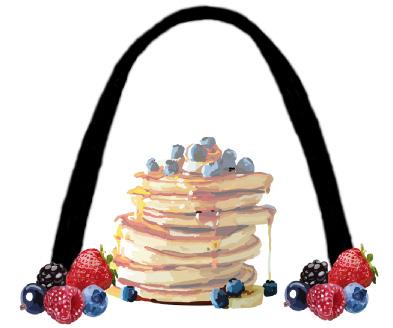
There is nothing better than a comforting plate of hot, golden brown pancakes on a Sunday morning. Pancakes are a delicious treat to start the day with, and Saint Louis has some of the best restaurants serving up these delicious stacks. Whether these restaurants are small businesses or chains, taste and quality are ideal: The Original Pancake House, Chris’ Pancake and Dining, IHOP and The Shack are four places to find delicious hot cakes!
The Original Pancake House: This classic pancake destination has locations in both Ladue and Chesterfield. With a broad menu of delicious breakfast foods, the most iconic are their pancakes. Menu highlights include their popular Dutch Baby, a variation of a famous German pancake; their unique pancake combos, such as Georgia Pecan pancakes, Hawaiian pancakes, Bacon pancakes; and the classic Buttermilk pancakes of course. They also serve flavorful crepes, which make for a refreshing twist. The Original Pancake House is a great option for breakfast. The environment is friendly, and although prices are a bit high, it makes for yummy splurge every once in a while. Their vast array of menu options will bring you back for more!
Chris’ Pancake & Dining: Chris’ is a go-to restaurant for breakfast, lunch, and dinner! Located in St.. Louis city, this restaurant has a wide variety of menu items. As for their pancakes, Chris’ has the choice of a tall or short stack with many topping and filling options, such as chocolate chips, various fruits, and even egg whites. Chris’ is reasonably priced, and offers a good bang for your buck! Chris’ is a casual venue and is a comforting environment. This restaurant is an STL favorite, so make sure you check it out the next time you are craving an incredibly appetizing breakfast.
The Shack: A very popular place among our community to grab a breakfast bite is the Shack. With five locations around Saint Louis, the Shack focuses on quality and a wide variety of breakfast items, ranging from breakfast burritos to a stack of fluffy pancakes. They are best recognized for its playful menu, which is big and recognized for their creative dish names, such as “Make a Grown Man Cry” and “Toot-Toot! Here Comes the Fruit”. All of the Shack’s griddle items do not disappoint, the most extravagant being The King Lives, with chocolate chips, bacon, banana and peanut butter drizzle. In addition, the Lemon Curd and Blueberry pancakes, topped with lemon curd, blueberry compote, and powdered sugar, is a refreshing pick as well. As always, customers have the option to customize their cakes. An honorable mention goes to their lavish waffle and french toast recipes, as well. The Shack is always reliable for a delicious bite, and although it has a higher price point than the other three restaurants, its fun environment and mouth-watering plates will have you dreaming of trying it out! The venue is casual, yet busy on a Sunday morning, so plan ahead! The food is worth the wait!
IHOP: A popular breakfast restaurant famous for its pancakes, IHOP’s buttermilk pancakes are topped with fluffy whipped butter and are perfectly golden. IHOP has quick service, and the venue is casual; ideal for a quick breakfast after a night out with friends or family. Its reasonable prices that give you quality and tasty food make IHOP the perfect go-to meal.

With the restrictions placed on many to mitigate the spread of Covid-19, small businesses need our support more than ever.
La Pâtisserie Chouquette in Tower Grove is one such business, founded and owned by Simone Faure. Faure has kept Chouquette’s doors open during the ongoing pandemic by hastily converting to a curbside operation. Through switching up their ordering procedures and going mostly virtual, the French café has been able to continue serving its signature drinks and dishes to customers.
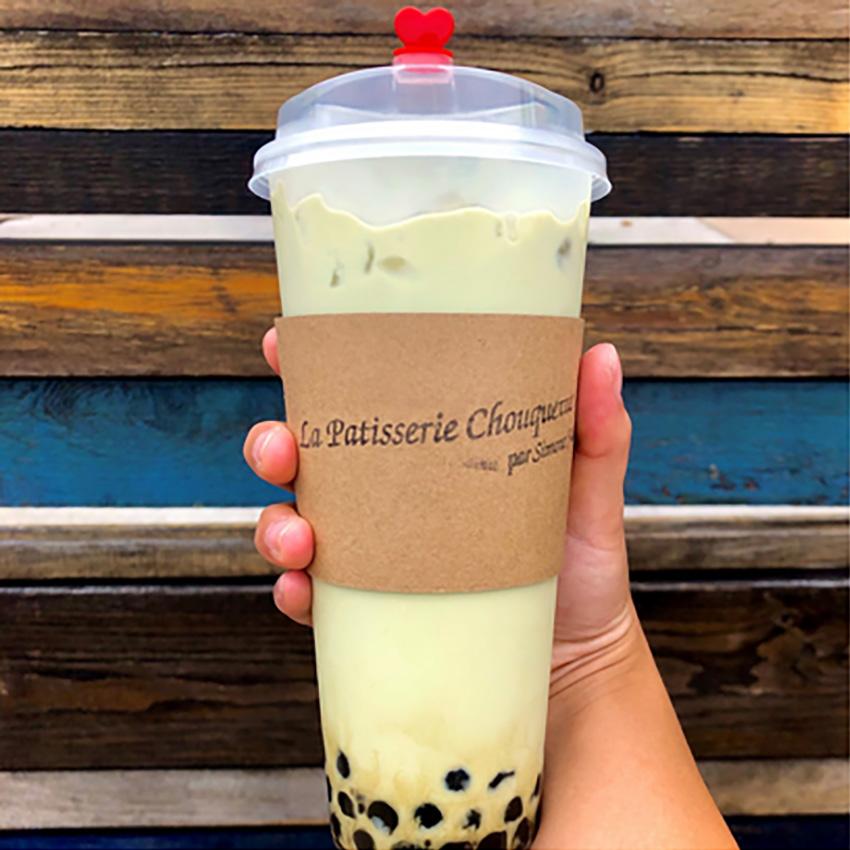
When I arrived at the café, they already had my order ready. Despite Saturday being their busiest day, the woman at the front door taking orders was organized, friendly, and never seemed to be rushed. The whole transaction was very smooth and easy. I simply ordered from their website and paid online. Within five minutes, I received a notification on
my phone saying my food was ready for pickup. Upon arriving at the café, I joined the line of socially-distanced customers out front.
When picking up my food, I got a chance to speak to Faure about how she continued serving her community through these rough times. Faure explained, “Like every small business, Chouquette has been forever altered by the pandemic, from what we serve to how and when we serve it.”
This not only applies to their walk-in café but their wedding cake business as well. Faure explains that nearly every wedding they had booked for 2020 was postponed or drastically reduced.
While my visit to La Pâtisserie Chouquette went smoothly, things were more difficult for the bakery months ago. “I made the decision to close the doors of Chouquette at the start of the pandemic. I didn’t know what that would truly mean, but I knew that I had to do my part to help stop the spread of the virus, and I didn’t want to be the reason that one of my employees became ill or worse,” Faure said.
After reopening two months later, the café has taken precautions in order to stay in line with city mandates. “We keep taking a stern approach to social distancing. While many shops reopened with walk-in service, I didn’t. I chose to go the route of curbside service only. It’s been wonderful.”
When adjusting to curbside service, Faure states that “It was odd at first.

We had no idea what to expect. There has been a rather large learning curve for customers and staff, and it took some time for customers to understand that curbside meant our curb, not across or down the street or in front of some other business.”
Chouquette is holding its own right now. In some areas, their sales have increased, mostly due to the new ordering procedures and menu items. However, Faure knows that small businesses need support during these strange times: “Larger chain stores have a much greater chance of surviving this. Smaller, single store operations like Chouquette are at risk of closing their doors for good because small businesses work off of cash flow. Without that steady income, payroll isn’t met, bills aren’t paid, and vendor relationships are severely damaged.”
This bakery has excellent teas and pastries to offer. It is always important to support local businesses, especially during these unprecedented times. As Faure says, “Without local support, small shops simply won’t survive.”
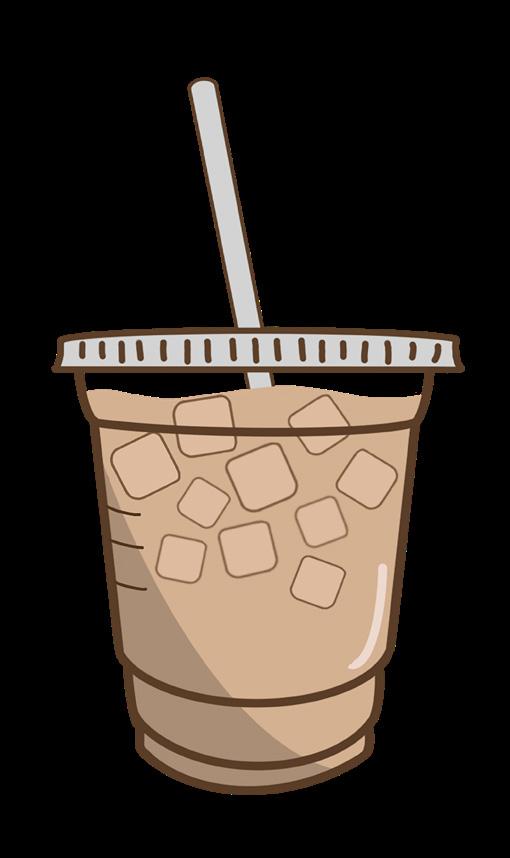
For many Villa students, waking up in the morning is more grueling than school itself. However, with the new rule allowing students to drink coffee in class, we now have the opportunity to keep our caffeine close and our focus closer. While Starbucks is a longtime favorite, Dunkin’ Donuts has recently started to rise in popularity, posing the question, which one is better? Let’s compare some of your favorite drink choices!

First, let’s look at price comparison. Dunkin’ drinks are at least a dollar less than their Starbucks counterparts, and if you get coffee every morning, those dollars add up.
There is also a clear coffee quality difference. Starbucks coffee is definitely stronger with a more bitter taste, whereas Dunkin’ uses a more mild brew that balances nicely with their flavor swirls.
Both coffee franchises also have food options. With donuts in their name, Dunkin’ is equally known for their coffee and their donut selection. Starbucks, on the other hand, is more coffee focused with some food options, so it makes sense why Starbucks has more drink options than Dunkin’.
The only real disadvantage Dunkin’ has compared to Starbucks is convenience and location. There are only six Dunkin’ Donuts in the St. Louis area whereas Starbucks has fifty-two locations. From Villa, the nearest Starbucks is 1.4 miles, and the closest Dunkin’ is 3.3 miles.

Vanilla
Iced Latte
Starbucks (Venti)
Dunkin’ Donuts (Medium)
Price $5.05 $4.09
Calories 270 calories 170 calories
Sugar 41 grams 36 grams
Protein 10 grams 2 grams
Caffeine 255 mg 267 mg
Starbucks (Venti)
Dunkin’ Donuts (Medium)
Price $3.09 $4.75
Calories 200 calories 130 calories
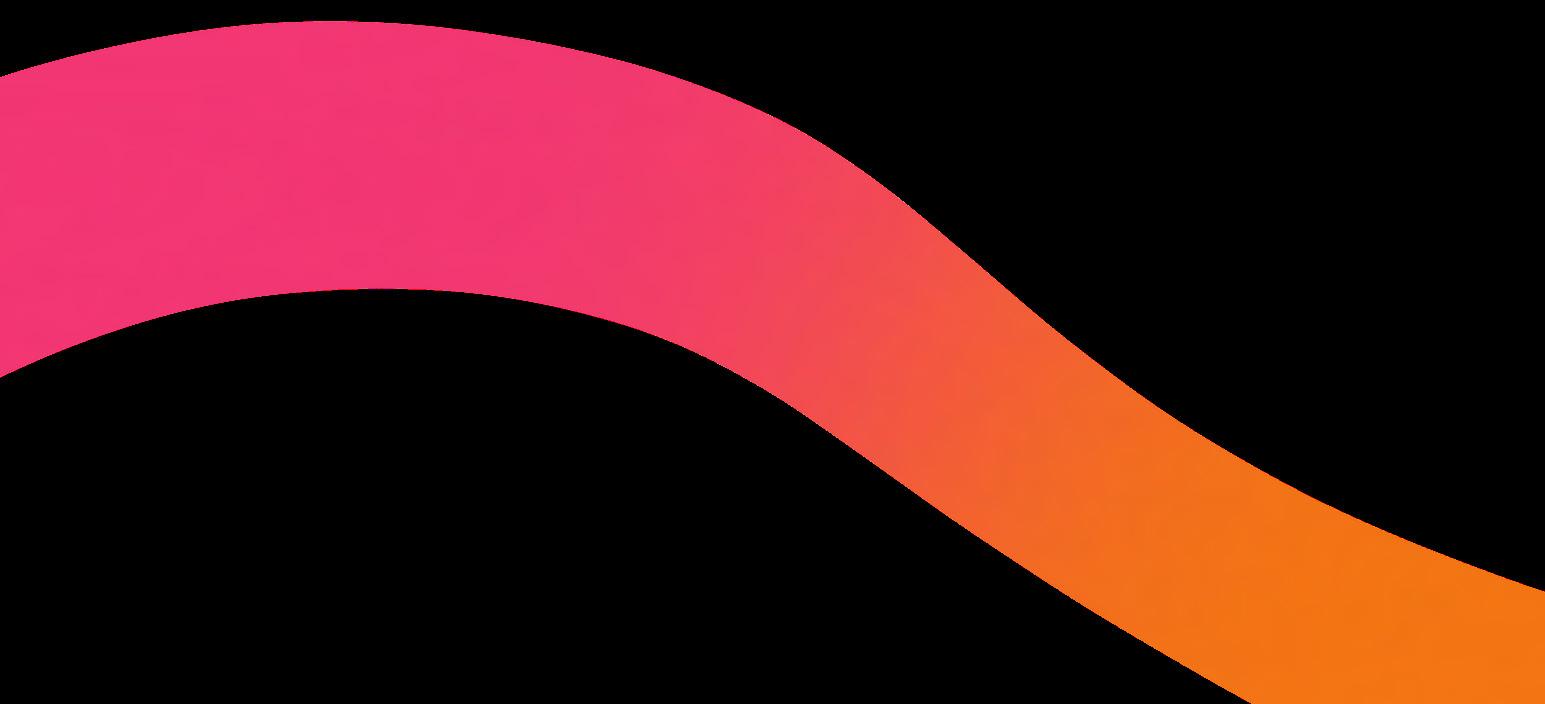
Sugar 47 grams 27 grams
Protein 0 grams 1 grams
Caffeine 70 mg 0 mg
Though Starbucks is more convenient, Dunkin’ holds better value, better calorie count, and, most importantly, a higher caffeine amount. If you get a cup of coffee every day, economically, Dunkin’ is for you. But, if you only get coffee every once in a while, Starbucks is usually more convenient and has more options.
This fall, minimalism is out while color and bold patterns are in! Considering that the weather in the Midwest is starting to get chillier, it is the perfect time to buy some new vogue pieces. In this first edition of À La Mode, readers will discover how to bring more color into an outfit along with what pieces to buy and the best places to find them.
One item that is an absolute necessity for this fall is statement piece. A statement piece is usually the first thing a person will notice about an outfit. They are creative, eye-catching, and attractive. Statement pieces are almost always an accessory, such as a necklace, shoes, earrings, or a handbag. However, any clothing item with funky patterns and bold colors can also be considered a statement piece. An example of pants being a statement piece would be the Patchwork Statue Print Boyfriend Jeans from Jaded LDN which are the perfect pants to bring an outfit to the next level. These jeans are eye-catching, colorful, and the ideal piece to match with a simple white tank or chunky sweater. Another example of a statement piece would be a striking shoulder bag or more specifically printed faux fur bags. These bags check multiple boxes with the furry element providing a cozy, fall feeling and the prints an easy way to add some color to an outfit. The best place to look for these bags would be Etsy or a local thrift store. On Etsy, search “fur shoulder bag” to find the cutest purses, but hurry, they’re selling out fast!
Another item that will be very trendy this fall is the sweater vest. Yes that’s right. Sweater vests. For this item, think Cher Horowitz’s wardrobe from the hit ’90s film “Clueless”. Argyle print, oversized, preppy dad sweater vests over a pleated tennis skirt will be a big streetwear trend this fall. Something good about sweater vests is that they can be bought at virtually any female targeted retail store like Ann Taylor, or department stores such as Nordstrom’s or H&M. Another tip to find this item is to look at the men’s section. A size or two up in a men’s sweater vest will provide the perfect oversized fit.
The last big item for this fall among young women is pleated tennis skirts underneath crewneck sweatshirts. This may sound a bit familiar considering this trend looks very close to Villa’s uniform. This is great because it makes the skirts feel similar and a bit easier to style. Along with Villa girls already being comfortable with wearing this type of skirt, they are also very easy to find online considering how popular they have become this past summer and these first few weeks of fall. Tennis skirts like these can be bought anywhere from the Australian boutique Princess Polly to Amazon Prime.
Elsa Schiaparelli, famed 1900s Italian fashion designer once said “in difficult times, fashion is always outrageous.” Times are rather difficult right now, so a dose of some outrageous fashion choices can only do good. Never forget to have fun with these pieces and make them your own!


DISCLAIMER: Although trends are constantly coming and going in the fashion industry, never feel the need to completely follow the trends of today. It is always possible to stay true to one’s own personal style while still including some trendy elements

Masks look as though they are here to stay, at least for the time being. Whether it’s a quick trip to the grocery store or an outing to the mall, shoppers and workers alike are donning masks for long periods of time. Not to mention that with in- person school alone, we spend around 35 hours a week within a mask. Despite the ubiquity of masks, not all masks are of equal quality, comfort, or price. Just a quick Google search will reveal the wide variety of masks available to consumers. This comparison will help you choose the mask that is right for you.
Cloth masks can be more pricey; six packs of cloth masks can range anywhere from $19.99 to $39.99 on Amazon. Similarly, a pack of three masks can cost $15.99 to $24.99 on Amazon. This is a hefty price for masks that may not be comfortable or fit correctly. Although cloth masks are more expensive, their price comes with benefits. Cloth masks can be thrown in the washer and come out good as new. Since cloth masks can be worn so many times, the high cost of these masks can be worth it in the long run.
A pack of 50 single use masks can cost as little as $14.99 on sites like Amazon, but the cheap price may not be worth it. These masks are disposable, which means you wear them once and throw them away, which is detrimental to the environment.
One pro of cloth masks is that they come in a variety of designs. You can find a cloth mask with any pattern or print you desire. Cloth masks also may have adjustable ear loops. However, cloth masks can have design issues. Some cloth masks have two layers of fabric, which can muffle sound and cause a buildup of moisture.
Paper masks can be thinner and more breathable, and they are available in a variety of colors. Some masks do come in different patterns, but there are fewer options to choose from. As for the ear straps, they can easily break and are not adjustable.
When used correctly, cloth masks can provide some protection from particles, as well as trap your particles in the mask. For these reasons, the CDC recommends cloth masks for public use. A Mayo Clinic article maintains that “cloth masks can help reduce the spread of the virus by people who have COVID-19 but don’t realize it.” Ultimately, cloth masks mostly prevent your germs and particles from being released, but the CDC says the “filtration effectiveness of cloth masks varies widely.”
These disposable masks are good at filtering out larger particles and stopping droplets of saliva from escaping. According to the FDA, disposable surgical masks do not “filter or block very small particles in the air that may be transmitted by coughs, sneezes, or certain medical procedures. Surgical masks also do not provide complete protection from germs and other contaminants because of the loose fit between the surface of the mask and your face.”
Story and Page Design by Anna Wiss
In the wake of a starting school year in the midst of a global pandemic, masks have become part of our daily routine. While they help mitigate the spread of COVID-19, they also cause maskne, otherwise known as mask acne, as particles, oils and dirt collect in pores. Villa students and faculty have observed the health of their skin dwindling.
Students and faculty here at Villa wear a mask for at least 40 hours a week, and this creates excess oils, dirt particles, and sweat. Masks cover the most sensitive areas of the face: the mouth, cheeks, chin, and nose. Certain mask materials can cause irritation and rubbing in sensitive areas. Dermatologists recommend wearing masks that are 100 percent cotton. A cotton mask allows your skin to breathe and is beneficial for sensitive skin.
Furthermore, changing and washing masks is one of the best methods to prevent the spreading of dirt, sweat, and built up oils. Reusing a mask spreads germs and can block pores further. A dermatologist, Dr. Candrice Heath, recommends you avoid scented detergents and fabric softeners when machine washing your mask. Another tip dermatologists recommend is to avoid wearing face makeup where you place your mask. The excessive rubbing and makeup is established in the pores. The less products the better. Serums and moisturizing products are more beneficial for the skin. Avoid harsh products that can dry out the skin. Cetaphil and CeraVe sell affordable products that are effective and can be purchased at any drugstore.
2
In the morning before you apply your mask (surgical or cloth), wash your face with a gentle cleanser such as Cetaphil or CeraVe.
4


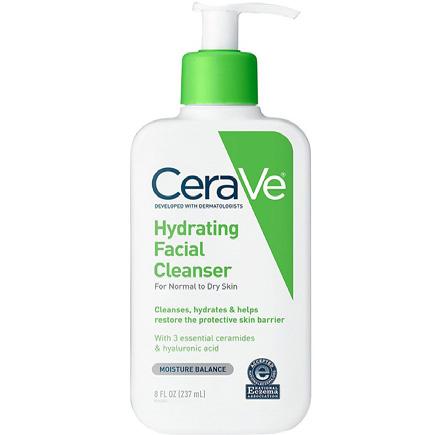
Apply your newly washed cloth mask or disposable surgical mask. 100% cotton masks are recommended for sensitive skin.
When it is safe to remove your mask, use the face wipes to cleanse your face.
5
5

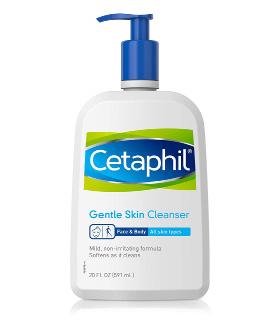
3
When in a pinch, face wipes are can cleanse the skin and remove the excess oils. When used at least once a day, Cetaphil and Neutrogena face wipes can be effective.
Remember to dispose or wash your mask. If using a cloth mask, use non-scented detergent in the washing machine and let the mask air dry.


